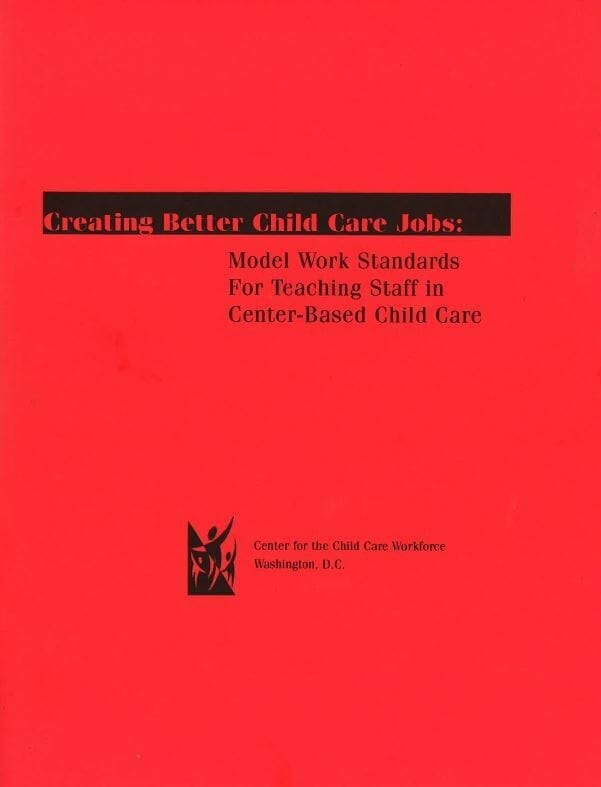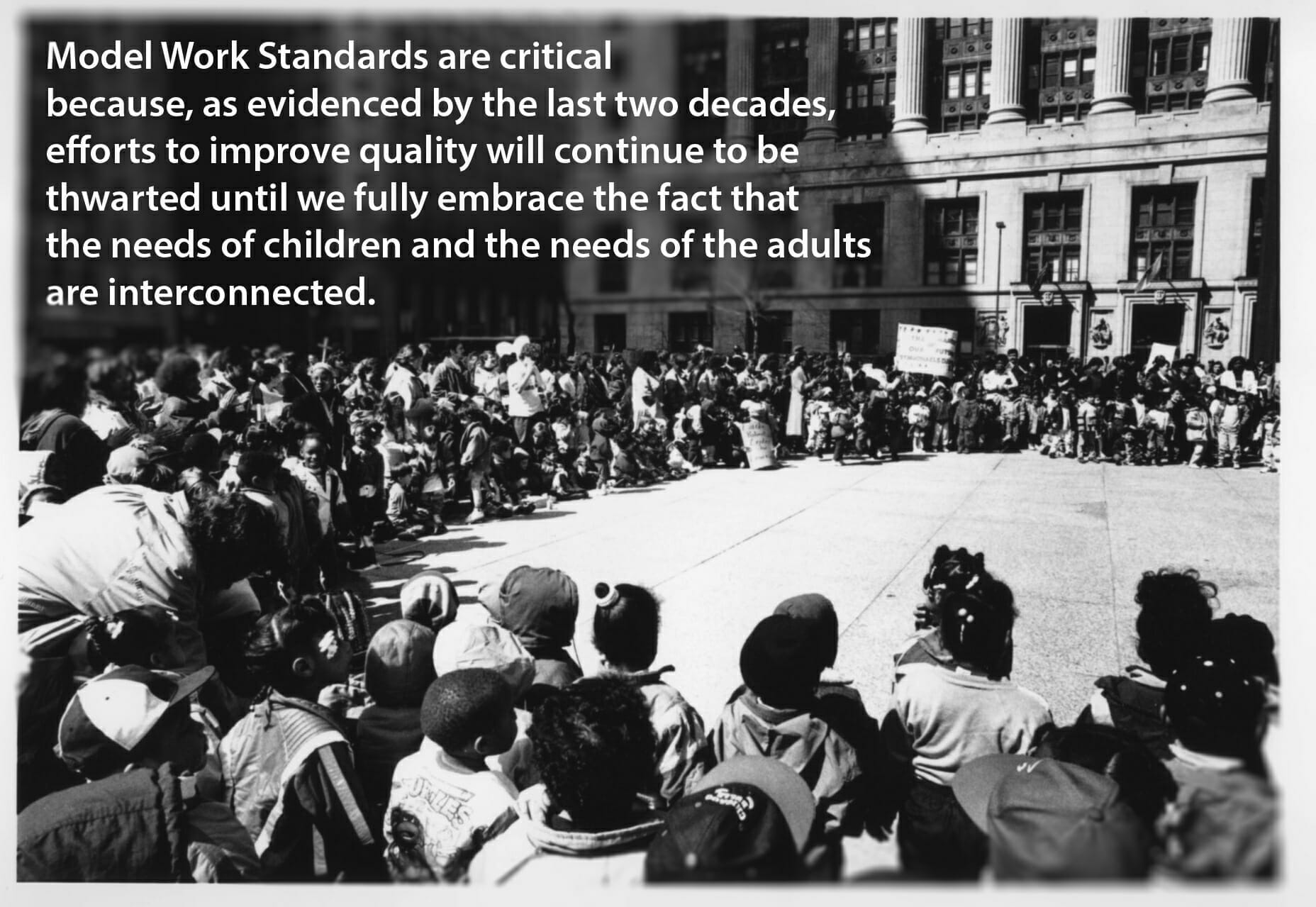On the first Worthy Wage Day in 1992, the three of us joined with other early childhood teachers and providers in marches and rallies held across the country, calling for greater public investment to improve pay and working conditions. Coordinated action on Worthy Wage Day over the next decade shined a spotlight on the urgent need to address the staffing crisis impacting children, families, and educators alike.

As part of its strategy, the Worthy Wage Campaign developed a resource called Creating Better Child Care Jobs: Model Work Standards to articulate what good work environments for early educators in center and home-based settings require. After twenty-one years, the Model Work Standards are coming back! Written two decades ago, we’ve had to dust them off a bit to reflect the current era and to inform–as they were always intended to do–our national dialogue on high quality early education.
When they were written in 1998, there were few program standards outside of licensing and accreditation, few coaches and consultants (who are now routinely employed to help meet new standards), and terms like “individualized professional development planning” were not part of our professional jargon. Yet, despite the increased emphasis on quality improvement, educator assessment, and the proliferation of new program standards for teachers and providers to meet over the last two decades, there remains minimal attention to the work environment and compensation standards that should exist for early educators. So, we’re doing a bit of repackaging–the standards are all still there, but with a little rearranging and consolidating–and we will be re-introducing them soon. All in all, the standards are remarkably similar to the ones child care teachers helped us define so many years ago… and they are remarkably different than all the standards that followed them!
Model Work Standards are different because teachers working in centers and family child care created them and because meeting them would mean providing teachers with working conditions that would enrich their lives and those of the children in their care. Model Work Standards are critical because, as evidenced by the last two decades, efforts to improve quality will continue to be thwarted until we fully embrace the fact that the needs of children and the needs of the adults are interconnected. Today’s efforts to improve quality continue to miss the mark for failure to address both together. From the inception of the Model Work Standards, we imagined that two sets of standards would sit side-by-side–one that addressed the well-being of children and one that addressed the well-being of the adults caring for them–or perhaps that one would be absorbed into the other to create a holistic approach to improving child care quality.

As the Model Work Standards make clear, a critical component of better work environments is the need for worthy wages. Despite the work of so many of us over the decades, caring for young children remains one of the lowest-paid occupations in the United States. The Worthy Wage Campaign initially met with resistance within the field and among policymakers and the wider public. But these same stakeholders today are coming to appreciate the full ramifications of paying such low wages for this crucial work – work that is performed mostly by women, nearly half of whom are women of color. Yet, little consensus exists on the primary reasons for compensation reform, what compensation reform looks like, and how to achieve reforms.
CSCCE’s new report released today, From Unlivable Wages to Just Pay for Early Educators, weighs in on these debates. The authors argue that a combination of increased and more stable public funding for the early care and education system as a whole, explicit requirements for minimum compensation standards, and an organized collective voice for early educators offer the most promising way to create better child care jobs.
The three of us began our careers as child care teachers and even though we are no longer in the classroom, our work continues to be fueled by our passion for economic justice for the child care workforce. We recall vividly the collective energy of the nationwide Worthy Wage Campaign of the 1990s that inspired these standards and drew attention to the subpar compensation paid to child care teachers. On this Worthy Wage Day 2019 –a day historically dedicated to declaring openly and boldly that the work of caring for and teaching young children is worthy work–it is our hope that the collective voices of the current generation of child care teachers and providers are respected, heard, and utilized to make the aspirations of model work standards and fair pay a reality.
The updated Model Work Standards were be re-released in November 2019 as a joint project of the Center for the Study of Child Care Employment (CSCCE) and the American Federation of Teachers (AFT).


